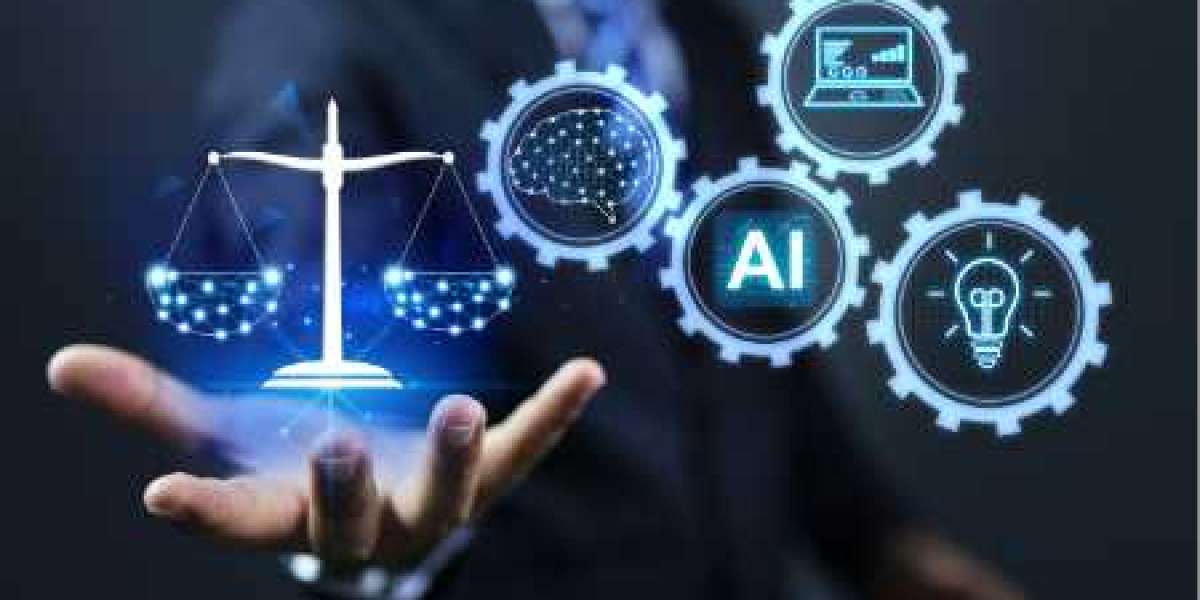n the age of artificial intelligence, Legal AI assistant the legal world is undergoing a quiet but seismic shift. At the center of this change is the Legal AI Assistant—a digital tool not just reshaping how lawyers work, but redefining what it means to practice law in the 21st century.
From Fortune 500 legal departments to everyday citizens fighting parking tickets, these AI-driven tools are rapidly becoming the norm rather than the exception. They are efficient, scalable, and accessible, delivering legal knowledge at a speed and cost previously unimaginable. In short, Legal AI Assistants are no longer an emerging trend—they’re the new normal.
What Is a Legal AI Assistant?
A Legal AI Assistant is software that uses artificial intelligence to perform or assist with legal tasks. These include document drafting, legal research, case analysis, contract review, litigation forecasting, regulatory compliance, and even real-time legal chat support.
Built on technologies like natural language processing (NLP), machine learning (ML), and predictive analytics, Legal AI Assistants go far beyond traditional legal software. Rather than just storing or searching for information, they understand context, generate content, and learn from outcomes.
Popular examples include:
Harvey – used by major firms to help write legal documents.
DoNotPay – dubbed “the world’s first robot lawyer” for everyday legal tasks.
Casetext CoCounsel – an AI legal research and drafting tool.
Kira Systems – contract review and due diligence automation.
How AI Assistants Are Disrupting Legal Workflows
Legal professionals once spent significant time on labor-intensive work: pouring over documents, reviewing contracts, and conducting exhaustive legal research. These tasks are now being completed in a fraction of the time by Legal AI Assistants. Here’s how they’re transforming everyday legal operations:
1. Document Automation and Drafting
Legal documents—contracts, memos, briefs, NDAs—are time-consuming to draft from scratch. AI assistants can create drafts using templates and contextual information provided by the user. These tools not only reduce workload but also standardize language, reducing legal risk.
2. Faster Legal Research
What used to take hours of sifting through case law can now be achieved in seconds. AI assistants can find relevant cases, summarize them, and even explain how they apply to a specific legal issue.
3. Contract Review and Risk Analysis
AI tools can flag unusual clauses, missing signatures, and noncompliance with applicable regulations. In high-volume contract scenarios, such as MA or procurement, this is invaluable.
4. Predictive Legal Strategy
By analyzing outcomes from similar past cases, some AI assistants offer data-driven strategy suggestions—such as whether to settle, how a judge typically rules, or what arguments tend to succeed.
Shifting Power Dynamics in Law
Legal AI isn’t just improving efficiency—it’s leveling the playing field. It enables:
Small Firms to Compete
Solo practitioners and small firms can now access the same analytical power as large firms, reducing dependence on costly manpower.
Clients to Take Control
Self-help AI tools are empowering clients to handle simpler legal issues themselves. From consumer rights to small claims court, people now have tools that make basic legal assistance available 24/7.
Access to Justice
According to the World Justice Project, 5 billion people globally face unmet justice needs. Legal AI Assistants—especially those available via apps or chatbots—offer a scalable solution to bridge this gap.
A Global Movement
Around the world, Legal AI Assistants are gaining traction in surprising ways:
India: Legal tech startups are using AI to help citizens understand property rights, file RTI (Right to Information) requests, and access public legal services.
Africa: Chatbots powered by local legal databases are helping farmers and traders understand contract law and business regulations.
Europe: Law firms are integrating AI assistants to comply with complex privacy regulations like GDPR in real time.
United States: Courts are experimenting with AI to streamline case scheduling and reduce trial backlogs.
The movement is no longer limited to Silicon Valley—it’s global, and it’s accelerating.
Legal AI as a Strategic Partner
Some attorneys still see AI as a threat. But forward-thinking professionals see it differently: not as competition, but as a strategic partner.
Lawyers bring:
Contextual judgment
Moral reasoning
Human empathy
Negotiation skills
AI brings:
Speed
Pattern recognition
Memory and recall
24/7 availability
Together, they create a hybrid approach to law that’s smarter, faster, and more client-centric. Legal AI Assistants can take over the grunt work, allowing lawyers to focus on strategy and advocacy.
Risks and Ethical Red Flags
The promise of Legal AI does not come without serious questions:
1. Bias and Fairness
If an AI system is trained on historical legal data with racial or gender bias, it can perpetuate those same injustices. Transparency in training data and model design is essential.
2. Unauthorized Practice of Law
Some AI tools blur the line between assistance and representation. Regulatory bodies are now grappling with whether AI can “give legal advice”—and what the limits should be.
3. Accountability
If an AI assistant makes a mistake—such as recommending the wrong course of action—who is liable? The developer? The law firm? The user?
4. Data Security
Legal data is highly sensitive. AI tools must adhere to strict standards for privacy, encryption, and jurisdictional compliance (especially under GDPR or HIPAA).
Preparing for the AI-Enhanced Legal Profession
Lawyers of the future will not just need to know the law—they’ll need to know how AI works, and how to use it responsibly. Skills like AI prompt engineering, data literacy, and ethical reasoning will become critical in law schools and continuing legal education.
Firms that fail to adapt risk falling behind. Those that do embrace Legal AI will be more agile, innovative, and client-friendly.
The Next Generation of Legal AI
Legal AI Assistants are evolving rapidly. We can expect to see:
Voice-powered courtroom assistants that help during live proceedings.
Personal legal bots that help individuals manage everyday legal needs (leases, taxes, claims).
Multijurisdictional compliance engines that track and advise on international legal standards in real time.
AI-powered legal education platforms that adapt to student learning styles and provide case-based simulations.
In the not-too-distant future, AI won’t just assist lawyers—it will help shape how laws are interpreted and enforced. The relationship between humans and machines in the legal field will continue to evolve, with both contributing essential strengths.
Conclusion: From Disruption to Integration
Legal AI Assistants have moved from disruptive novelty to indispensable tool. They’re saving time, cutting costs, empowering clients, and expanding access to justice. But they’re also raising vital questions about bias, responsibility, and the role of human judgment in the legal process.
As the technology matures, the legal profession must mature with it—balancing innovation with integrity, and automation with accountability. In doing so, we can harness the full potential of Legal AI Assistants not to replace lawyers, but to make law work better—for everyone.








